Cate Blanchett, Rooney Mara and Todd Haynes chat with the Los Angeles Times
What do Cate Blanchett and Rooney Mara think of director Todd Haynes’ favorite ‘Carol’ scenes?
In a conversation with The Envelope, Todd Haynes, director of the beautiful, spellbinding romance “Carol,” mentioned his three favorite scenes shared by his Oscar-nominated actresses Cate Blanchett and Rooney Mara. Naturally, we had to ask the women about them too. Their reactions to Haynes’ choices — along with his own comments — provide a glimpse into the deliberate decisions and considerable challenges that went into making this celebrated film.
Scene 1:Carol drives Therese to her New Jersey home for the first time. In the novel, Patricia Highsmith writes: “They roared into the Lincoln Tunnel. A wild, inexplicable excitement mounted in Therese as she stared through the windshield. She wished the tunnel might cave in and kill them both, that their bodies might be dragged out together.”
Haynes: I read that and I thought, “Yes! That is … love!” It’s what you do in your mind when you fall in love. You’re so close to those moments that a trifle will set off a fantasy of suicide or some dramatic idea of dying with your loved one, just so you’re witnessed together for posterity. [Laughs]
This scene has such an emotional potency in the story and also it has such a stylistic distinction from anything else in the film with those slow dissolves and the music mix and a state of almost intoxication that evokes what it’s like to fall in love.
It’s also a scene that created real practical problems shooting in Cincinnati because the length of the tunnel we used is about 200 yards. So we had to keep scheduling a drive through this tunnel over and over and over again. The tunnel was so short that daylight would start coming through almost immediately. So we shot it at like 4 in the morning after an already incredibly long day, using a police escort that took about 45 minutes just to do a circle and go back around again for what’s literally 30 seconds of shooting.
Mara: They just played that scene [at the AFI Awards luncheon]. It’s fresh in our minds.
Blanchett: Yeah, but we also shot that in so many pieces. The whole thing seems like a dream to me. I can’t remember a lot of it.
Mara: You were driving and it was freezing. It was really late at night.
Blanchett: Yes. It was tacked on to the end of a night shoot. We spent a lot of time in the car in this movie with Todd and [cinematographer] Ed [Lachman]. They were like the two old men from “The Muppets.” Always talking. [Laughs] But that one in the tunnel, they couldn’t be in the back seat and it felt a little lonely without them.
Mara: It’s one of the scenes that stood out to me when I saw the film for the first time. It was different from how I imagined it. That scene, more than anything, gives you the feeling of falling in love.
Blanchett: On a prosaic level, it’s quite a functional journey. But what Todd’s done with it, you’re crossing over a threshold. I didn’t realize he was going to shoot it in so many sections. He obviously realized that the characters are moving through a membrane of some kind. People talk about the chemistry and say it’s something Rooney and I manufactured, but in that instance, that was all Todd. It’s the way the sound has been mixed. You hear what the person’s saying, but it’s utterly irrelevant.
Mara: Which is exactly what it’s like when you’re falling in love. You feel like everything the other person is doing is magic. They can do no wrong.
Scene 2:Shortly after being caught by a private investigator hired by Carol’s husband, Therese and Carol return to the Drake Hotel. Therese feels like everything between them has been destroyed. Carol calls Therese to her bed where they embrace, but there’s a new element of tragedy in the lovemaking. We then learn the next morning that Carol has left.
Haynes: In production, this was the first time they did kiss. We shot it before the sex scene. And both actresses will make note of the fact that I didn’t say “cut” for a long time. [Laughs] And they kept going. I was sort of enthralled watching. It was the first time Cate and Rooney made out in front of me. And I couldn’t say “cut.” I didn’t want to put them in an awkward position. I think I ultimately did.
Blanchett: We just called out: “Is that enough? Can we go now?”
Mara: Perv! [Laughing] It was one of the first scenes we shot together. We didn’t know each other very well. It was our first real interaction. It wasn’t awkward, but it was kind of embarrassing because we had to make out and we were giggly and he wouldn’t yell cut because, I think, everything was still new and exciting.
Blanchett: There was something slightly voyeuristic about it, but in a beautiful way. I imagine the first time you get your actors together as a director, you’re seeing what that is. It’s like your brother peeping through the door, watching you undress. It’s like: “I know you’re there!”
Haynes: What the two actresses were doing in the scene, because it had such a tragic dimension, was so moving to me that I had a hard time ending. That scene kills me every time I see it. There’s a pained expression in Rooney’s face where you see the weight of implication in where they are in their lives.
Blanchett: I remember the dialogue that preceded the lovemaking and Todd wanted to extend the moment into that moment of exposure for the women. I remember asking him: “Do we need this? Are you sure?” That’s an actor’s reticence. Todd is so musical. He knew it needed that counterpoint, that release. And he was absolutely right.
Finally,the scene that bookends the film: Carol and Therese’s meeting at the Ritz. As it opens the film, we don’t understand the significance of their conversation’s abrupt ending, though we do know by the way Carol touches Therese’s shoulder as she leaves, that there is something between these two women. When the movie circles back to the scene at the end, we see that Carol is now the vulnerable one, asking Therese for a second chance.
Haynes: This double scene and the pivot that it plays in the story — though I think in “Carol,” this pivoting in status in the relationship is given a further dimension than it is in the source we lifted it from — comes from the movie “Brief Encounter.” That movie opens with a succession of little moments where you’re wondering whose story it is and when are we going to land and find our route. I love that. The whole question of whose story this is and whose emotions are we really inside was, in my mind, definitive for the love story.
Blanchett: “Brief Encounter” is one of my favorite films, one that I constantly revisit. The performances are so extraordinary. I will never forget when they’re about to consummate their relationship and they have to go out from the kitchen to the fire escape and suddenly what was so beautiful has turned sordid and dirty. It’s when the world pollutes what seemed so pure and perfect. It’s very hard to keep romance alive in the modern world.
Mara: What’s striking is how the roles have really flipped when you return to the scene in “Carol.”
Blanchett: I still think it’s surprising when Carol asks, “So, would you like to move in with me?” and Therese says, “No. I don’t think so.” You go, “Okaaay. I guess that’s it then. There’s not a lot of wiggle room.”
Mara: She’s just a straight shooter. I love that about her. Probably because I’m much more indecisive.
Blanchett: I don’t know. Maybe when it comes to love, a bit of caution isn’t such a bad thing.
And a solo interview in French for Cate Blacnhett
Cate Blanchett, l’élégance sur grand écran
On la voit cet hiver, dans la campagne du parfum Sí de Giorgio Armani. Son rôle dans Carol, en salle actuellement, pourrait lui valoir plusieurs récompenses prestigieuses. 2016 démarre en force pour Cate Blanchett…
Dans Carol, vous jouez une femme mariée, éprise d’une jeune photographe, dans l’Amérique des années 50… Après Elizabeth, Charlotte Gray, Veronica Guerin, Blue Jasmine, etc., c’est la huitième fois que vous tenez un rôle-titre…
Ah oui ? Je n’y avais pas pensé. Je vous assure que je n’y suis pour rien. Sinon, j’aurais demandé qu’on change le titre de Cendrillon, où j’incarnais la marâtre, pour “Belle-mère”, cela aurait fait neuf films ! Plus sérieusement, pour Carol, c’est un pur hasard. A l’origine, le livre dont est tiré le scénario s’intitulait The Price of Salt (Le prix du sel). Il est sorti en 1952, sous la signature de Claire Morgan, qui n’est autre que le pseudonyme de Patricia Highsmith (L’inconnu du Nord-Express). Le roman a fait scandale, et il a fallu quelque temps pour qu’il reparaisse sous un nouveau nom, Carol. Il aurait pu aussi s’appeler “Therese”, le prénom de la jeune fille dont Carol tombe amoureuse (interprétée par Rooney Mara). En effet, la scénariste a changé le point de vue de l’histoire, de manière qu’on cerne mieux les deux femmes.
Le réalisateur Sydney Pollack (Out of Africa) aimait répéter que tout était politique, même une rencontre amoureuse. Dans ce cas, Carol, qui est un plaidoyer pour la tolérance et la cause féminine, est-il un film politique ?
Ce n’est pas de l’agit-prop non plus ! C’est très cynique de voir de la politique partout. Mais Sydney aimait bien provoquer le débat. Carol, c’est avant tout une histoire d’amour entre deux personnes isolées, marginalisées, mais volcaniques. Leur relation évolue dans un contexte social particulier, celui des années 50, où une liaison homosexuelle, a fortiori quand elle engageait une mère de famille, provoquait des remous catastrophiques. Le film ne joue pas la carte politique, mais expose les options qu’ont Carol et Therese, et souligne le courage de Carol pour assumer ses sentiments. C’est après la projection que peut naître le débat d’idées. Pendant, tout est fondé sur une élégance, une légèreté, une musicalité, plus présentes qu’un sous-texte politique.
L’élégance, justement, frise ici l’obsession tant tout est millimétré, jusque dans vos moindres gestes, votre port de tête, ou quand vous faites l’amour pour la première fois avec Therese – Rooney Mara…
Je voulais qu’on ressente chaque mouvement du personnage. Que Carol soit à la fois accessible et mystérieuse. Elle devait être fluide et inatteignable, afin qu’on ait envie de la connaître. Et, pour la fameuse scène que vous évoquez avec Rooney, il n’y a eu aucune gêne. Todd Haynes est d’une telle délicatesse ! Comme tout créateur, il est très méticuleux, mais pas précieux. Il a un grand sens de la beauté, de l’esthétique, mais il est aussi très rock’n’roll et sauvage. Son tact et son esprit libre-penseur créent une texture unique sur le plateau qui définit son travail, cela se ressent à l’écran. Regardez ses films précédents : Safe, Velvet Goldmine… C’est impertinent, cru, beau. Carol a ceci de plus que Todd s’adresse à un public plus large, tout en gardant son intégrité.
Vous parlez d’intégrité, mais n’y a-t-il pas des longs-métrages dans votre filmographie que vous avez acceptés juste pour le chèque ?
Pour cela, il aurait fallu qu’on me le propose, ce gros chèque – car je suppose que la somme doit être conséquente pour qu’on accepte de faire une chose qui ne nous plaît pas ! Vous allez être déçu : non. Je ne regrette absolument rien et j’assume toute ma filmographie.
Vous évoquiez Cendrillon. Avouez qu’on ne vous attendait pas là…
Et c’est justement pour cette raison que je l’ai accepté ! Par exemple, quand on m’a proposé le rôle de Galadriel dans Le seigneur des anneaux, mon agent m’a dit que je n’étais pas obligée, avec une pointe de mépris dans la voix. Je l’ai traité de malade et j’ai foncé – et, comme je prends mes propres décisions, j’ai des relations disons “costaudes” avec lui ! Je me tue à lui expliquer que tout est risqué, qu’on peut avoir les meilleurs éléments à la base et se retrouver avec un ratage à l’arrivée. C’est souvent l’imprévu qui apporte la grâce. J’en reviens à Cendrillon : le budget costumier, maquilleur et coiffeur prévu sur Carol était si petit qu’on économisait tout ce qu’on pouvait. C’est ainsi que les essayages de Carol se sont déroulés sur le plateau de Cendrillon.
Un gros film vous permet donc de soutenir des projets plus modestes ?
Oui, mais ce n’est pas pour cela que j’accepte le gros film. Je m’intéresse autant aux blockbusters qu’à des oeuvres obscures de la Chine du Nord ou du Kazakhstan ! Je n’ai pas d’oeillères. Woody Allen dit qu’un mauvais film demande autant d’efforts qu’un bon. On doit juste être conscient de ce que l’on fait. Il y aura toujours des compromis et des contraintes, mais cela fait partie du contrat. Il faut en être conscient avant. Je suis fière de Carol, un petit film indépendant dont le scénario circule depuis longtemps – il a été écrit il y a une quinzaine d’années – et auquel je suis attachée depuis six ans. Le montage financier a été compromis, la distribution a failli être annulée, la production a franchi divers obstacles sans s’éloigner du projet initial. Qu’il ait du succès ou non, qu’il soit récompensé ou non, on s’en moque. C’est le film qu’on voulait faire.
L’oscar remporté pour Blue Jasmine de Woody Allen a-t-il changé votre vie ?
Non. Je me suis juste remise à croire à une carrière dans le cinéma. J’avais commencé à en faire le deuil, sans grands regrets, car je travaillais beaucoup par ailleurs, notamment avec une troupe de théâtre en Australie. Et puis j’avais mes enfants, dont je m’occupais davantage. Cet oscar m’a permis de me rappeler au bon souvenir de la profession et du public.
Vous venez d’adopter une petite fille, et vous aviez déjà trois enfants. Comment gérez-vous votre vie de famille ?
Ma petite dernière m’accompagne dans mes déplacements promotionnels. En revanche, pour un tournage, j’essaie dans la mesure du possible de rester près de chez moi. Surtout que l’aîné traverse une période difficile, le cadet a des examens, le troisième attend qu’on ne soit pas à la maison pour faire la fête… L’année dernière, j’avais un script formidable, mais j’ai dit que je le ferais à condition que le tournage ait lieu en Australie. Les producteurs ont évalué le budget, se sont aperçus qu’on pouvait filmer en décors… Du coup, ils ont accepté. Mais cela ne me dérange pas de refuser des films. Personne n’est indispensable, et il faut laisser du travail aux autres. Mon mari a une carrière, on a de quoi vivre, tout va bien.
On chuchote que vous avez rencontré votre mari à une partie de poker. C’est vrai ?
Oui ! Je joue aussi, mais pas très bien. J’ai rencontré Andrew lors d’une partie, on s’est embrassés et, trois semaines plus tard, on s’est mariés !
Et vous jouez encore ?
Lui, surtout. Il se débrouille bien. J’aime le poker : c’est une leçon de vie et on apprend sur soi.
Votre carrière a décollé en même temps que celle de Kate Winslet. Elle avec Titanic, vous avec Elizabeth. On vous confond toujours toutes les deux ?
Mais oui ! Combien de fois ne m’a-t-on pas félicitée pour Titanic ! Je ne m’en lasse pas. Je ne démens pas et je dis merci. Il y a une semaine encore, quelqu’un m’a arrêtée et lancé : “Etes-vous qui je pense ?” J’ai répondu : “C’est-à-dire ?” – “Kate Winslet !” La personne était si contente… J’ai récolté les compliments et j’ai continué mon chemin. Et vous ne connaissez pas la meilleure ? Kate et moi avons le même agent !
Lisez-vous ce qu’on raconte sur vous sur Internet ?
Les réseaux sociaux sont un outil très pratique, mais c’est comme les toilettes : les graffitis sur les murs ne sont jamais très utiles. C’est parfois drôle, on peut dénicher un brin de poésie, mais cela demande de lire 1001 choses inutiles ou méchantes pour en trouver une notable… Je ne suis inscrite ni sur Twitter ni sur Facebook. Je préfère faire les choses que les commenter.
via Le Vif
 Welcome to Cate Blanchett Fan, your prime resource for all things Cate Blanchett. Here you'll find all the latest news, pictures and information. You may know the Academy Award Winner from movies such as Elizabeth, Blue Jasmine, Carol, The Aviator, Lord of The Rings, Thor: Ragnarok, among many others. We hope you enjoy your stay and have fun!
Welcome to Cate Blanchett Fan, your prime resource for all things Cate Blanchett. Here you'll find all the latest news, pictures and information. You may know the Academy Award Winner from movies such as Elizabeth, Blue Jasmine, Carol, The Aviator, Lord of The Rings, Thor: Ragnarok, among many others. We hope you enjoy your stay and have fun! 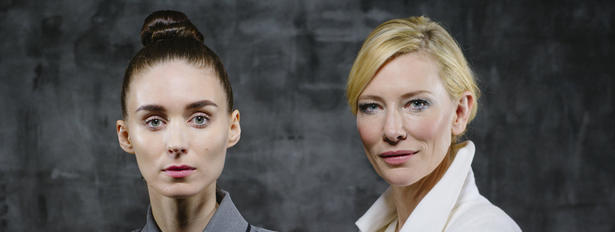

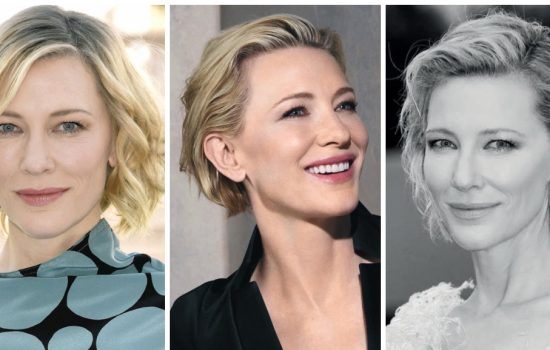
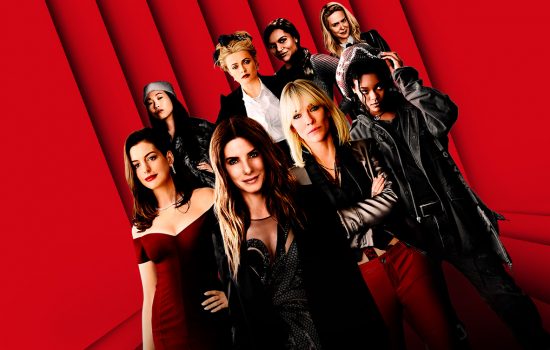
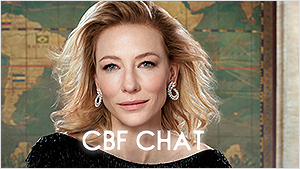
 Black Bag (202?)
Black Bag (202?)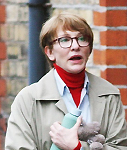 Father Mother Brother Sister (202?)
Father Mother Brother Sister (202?)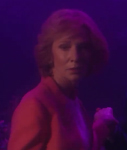 Rumours (2024)
Rumours (2024)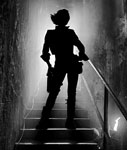 Borderlands (202?)
Borderlands (202?)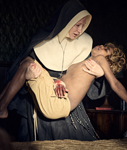 The New Boy (2023)
The New Boy (2023) TÁR (2022)
TÁR (2022)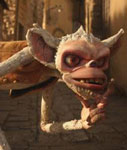 Guillermo Del Toro’s Pinocchio (2022)
Guillermo Del Toro’s Pinocchio (2022)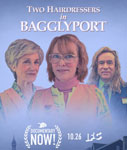 Documentary Now!: Two Hairdressers in Bagglyport (2022)
Documentary Now!: Two Hairdressers in Bagglyport (2022)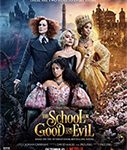 The School for Good and Evil (2022)
The School for Good and Evil (2022)












